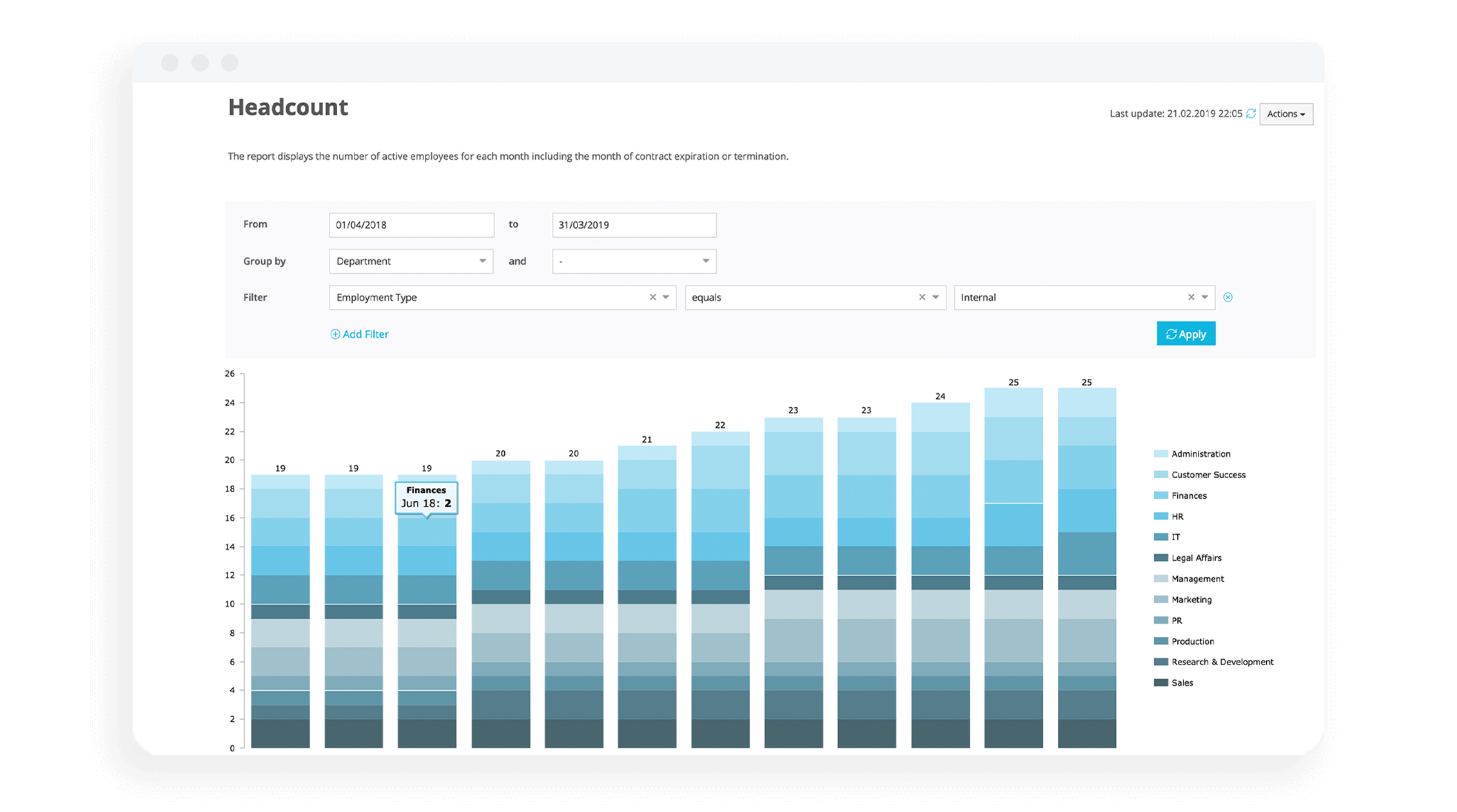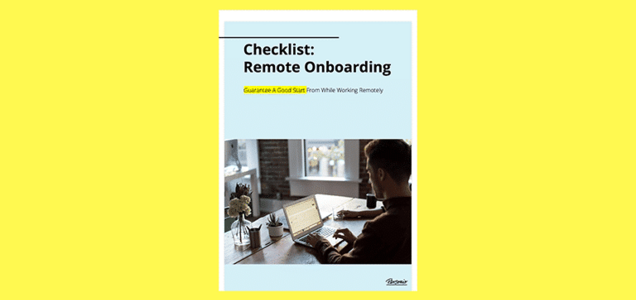Working-from-Home Policy Guide & Example for HR

Remote work is here to stay. Increased employee demand for the perk — not to mention the convenience it offers and its impact on office space spending — has convinced many companies to make remote work a key part of their offerings. But it’s not just about setting up a remote login. It’s essential to define expectations when employees work from home. This guide takes you through the ins and outs of developing a working-from-home policy for your organisation along with an example policy you can use as a starting point.
Key facts
A working-from-home policy lists guidelines that help remote workers maintain productivity.
Remote work gives employees more control over their work-life balance, increasing job satisfaction.
Your work-from-home policy should be clear and straightforward.
What is a work-from-home policy?
Work-from-home (WFH) policies define the rules and regulations companies expect remote workers to follow. They set expectations and outline resources at an employee's disposal to help ensure work operations run as smoothly as possible.
How can a work-from-home policy benefit your business?
Implementing a work-from-home policy has several advantages that can help your business succeed, including:
Increased productivity. An office filled with chatter and ringing phones may be distracting for some employees. When they can work from home, employees can focus entirely on the work in front of them and ultimately get more done.
Cost effectiveness. Working-from-home policies help reduce overhead costs related to keeping and maintaining office space, including the size of the office and supplies you need to buy.
Reduced workplace stress. Remote workers have better control over their daily schedules when they work from home. With a less hectic and stressful schedule, employees can remain refreshed and focused.
A wider talent pool. An established work-from-home policy can significantly expand who you can hire. With enough resources, your remote infrastructure can reach across geographic boundaries and build a stronger and more diverse specialised workforce.
Higher employee retention. Employees want flexibility. A significant number of UK workers — around 45 per cent — want the option to work from home. By offering a work-from-home option, your best employees are more likely to stick around.
How to create a working-from-home policy
While the specifics vary from company to company, the essentials of a working-from-home policy are the same. Keep the below pointers in mind while crafting a policy that works best for your company.
Define employee eligibility
Remote and traditional office workers receive the same employment rights under UK law. However, there’s no legal right to a work-from-home arrangement. Workers have the right to request these accommodations but employers have the final say in who can enter the programme.
Your policy should clarify the type of employee the company would trust to work from home. Generally, you want someone with the tools, home office space and motivation to thrive outside the office. It’s also important to consider the scope of the role and whether the duties of the position can be adequately performed at home.
Outline employee equipment and asset needs
Work-from-home positions rely heavily on seamless technological integrations. An outdated laptop or a weak internet connection can hinder work-from-home progress. Detail the minimum equipment standards, as well as what your company plans to offer to support work-from-home setups, in your policy.
Establish security protocols
Accessing sensitive company data offsite can open up security risks for your company. Create a process for handling important information to mitigate the possibility of leaks or hacks. It’s also a good rule of thumb to ensure that employees have a minimum level of cybersecurity to defend against any hacking attempts.
Monitor employee performance
Monitoring employees’ success in a remote arrangement is vital for determining whether it’s right for them. Decide how you plan to track performance, whether that’s through regular meetings, setting performance-related benchmarks or installing software to monitor remote work. Whichever method you use, be sure to detail expectations and procedures in the working-from-home policy.
Make it as detailed as possible
Avoid vague language. Be direct and to the point when writing your policy. Offer details that give remote employees what they need to fully understand each point of the policy and leave little room for interpretation.
Be Prepared for the Future of Work

Remote work is becoming a future task for companies. To enable HR to focus on strategic projects like this, Personio fundamentally simplifies your HR work and frees time for strategic tasks.
Book your demoWork-from-home policy example
Use this example as a loose reference as you draft your own policy.
1. Introduction
At Company A, we understand the importance of flexible working arrangements and healthy work-life balance. Accordingly, we’ve made a remote work option available for eligible employees. This work-from-home policy outlines guidelines and expectations to ensure workers can maintain productivity, reliable communication and data security while working remotely.
2. Eligibility
All employees of Company A may request work-from-home arrangements in both hybrid and full-time capacities. The approval of such requests will be at the discretion of the employee's supervisor and department head. Remote arrangements should reasonably align with the nature and responsibilities of the requesting employee’s role.
Employees interested in working remotely, whether on a hybrid or a full-time basis, must submit a formal written request to their immediate supervisor. The proposal should outline the reasoning for their desire to change their current arrangements and any special considerations they’ll require to work remotely.
An employee’s immediate supervisor will communicate an approval or denial of their work-from-home request through writing.
Equipment
Employees approved for remote work are responsible for ensuring they have the necessary equipment to perform their roles successfully. Requirements include:
A computer with at least an Intel Core i3 processor
A reliable internet connection capable of at least 25 Mbps download speeds.
A webcam
Company A may provide additional equipment or resources upon request.
Cybersecurity
Company A employees must adhere to the company's data security and confidentiality policies when working remotely.
Sensitive information should not be discussed with anyone not associated with Company A.
Data should only be downloaded or uploaded over a secure connection. If connected to a public Wi-Fi network such as those provided by airports, hotels, or coffee shops, a VPN must be in use before handling company information.
It is the responsibility of the employee to utilise other security measures, such as backup procedures and encryption, as necessary.
Performance
Employees working remotely are subject to the same performance standards as those working in the office. Performance will be evaluated based on predetermined key performance indicators (KPIs) and job responsibilities relevant to the employee's role.
The remote employee’s immediate supervisor will review the employee’s performance and provide feedback during weekly check-ins and monthly performance reviews through remote conferencing software.
Employees that do not meet performance standards will receive a verbal warning. A written warning will follow if improvements are not made. If no improvement is made after the written warning, the employee may have their working-from-home privileges revoked.
Frequently asked questions: Working from home policies
What is a work-from-home policy?
A work-from-home policy defines workers' rules and guidelines in a remote working arrangement.
How can you create a work-from-home policy?
The typical steps required to create a work-from-home policy are:
1. Determine who’s eligible to work from home.
2. Set expectations.
3. Create communication channels and procedures.
4. Ensure adequate cybersecurity.
5. List the expenses you’ll cover to properly enable work from home arrangements.
6. Clarify the approval process for requesting work from home arrangements.
7. Explain performance expectations and detail consequences if performance expectations are not met.
What is an example of a work-from-home policy?
A work-from-home policy details who is eligible to work from home, your responsibilities to the employee and expectations for employee performance. You may want to add or remove other components of a work-from-home policy depending on your organisation’s unique needs.
Manage your remote workforce with Personio
No matter where your employees work from — or where you work from — Personio is here to support your workforce. From a full suite of HR management tools to analytics and reporting features, you can get a full picture of how remote workers are adjusting to work-from-home arrangements. Book your demo today and see how Personio simplifies people management.
Disclaimer
We would like to inform you that the contents of our website (including any legal contributions) are for non-binding informational purposes only and does not in any way constitute legal advice. The content of this information cannot and is not intended to replace individual and binding legal advice from e.g. a lawyer that addresses your specific situation. In this respect, all information provided is without guarantee of correctness, completeness and up-to-dateness.

